- News
- Reviews
- Bikes
- Accessories
- Accessories - misc
- Computer mounts
- Bags
- Bar ends
- Bike bags & cases
- Bottle cages
- Bottles
- Cameras
- Car racks
- Child seats
- Computers
- Glasses
- GPS units
- Helmets
- Lights - front
- Lights - rear
- Lights - sets
- Locks
- Mirrors
- Mudguards
- Racks
- Pumps & CO2 inflators
- Puncture kits
- Reflectives
- Smart watches
- Stands and racks
- Trailers
- Clothing
- Components
- Bar tape & grips
- Bottom brackets
- Brake & gear cables
- Brake & STI levers
- Brake pads & spares
- Brakes
- Cassettes & freewheels
- Chains
- Chainsets & chainrings
- Derailleurs - front
- Derailleurs - rear
- Forks
- Gear levers & shifters
- Groupsets
- Handlebars & extensions
- Headsets
- Hubs
- Inner tubes
- Pedals
- Quick releases & skewers
- Saddles
- Seatposts
- Stems
- Wheels
- Tyres
- Health, fitness and nutrition
- Tools and workshop
- Miscellaneous
- Cross country mountain bikes
- Tubeless valves
- Buyers Guides
- Features
- Forum
- Recommends
- Podcast
review
£2,350.00
VERDICT:
Race-ready performance with great handling and decent comfort, the Tarmac Disc Sport shines everywhere bar value
Weight:
8,370g
Contact:
At road.cc every product is thoroughly tested for as long as it takes to get a proper insight into how well it works. Our reviewers are experienced cyclists that we trust to be objective. While we strive to ensure that opinions expressed are backed up by facts, reviews are by their nature an informed opinion, not a definitive verdict. We don't intentionally try to break anything (except locks) but we do try to look for weak points in any design. The overall score is not just an average of the other scores: it reflects both a product's function and value – with value determined by how a product compares with items of similar spec, quality, and price.
What the road.cc scores meanGood scores are more common than bad, because fortunately good products are more common than bad.
- Exceptional
- Excellent
- Very Good
- Good
- Quite good
- Average
- Not so good
- Poor
- Bad
- Appalling
As the most affordable carbon fibre Tarmac with disc brakes, there's a lot riding on the Tarmac Disc Sport being a good bike because it's likely that it will sell in much greater numbers than the stunningly good S-Works Tarmac I reviewed in 2017. Thankfully, although not as light and flighty as that bike, the Tarmac Disc Sport is really good, offering great handling and brisk performance. Perhaps the only wrinkle is that some brands will sell you an Ultegra groupset on a carbon frame for about the same money. That aside, you're getting probably one of the best carbon race frames currently available at this price, with great upgrade potential.
- Pros: Great handling, fast, fun, comfortable
- Cons: Weight, lower spec than some rivals
If the S-Works Tarmac is the GTI of the range, the Tarmac Disc Sport is the humble 1.0 litre. Same fundamental design but with fewer frills. On the road, that means a very impressive performance with similar handing – no surprise given the identical geometry.
> Find your nearest dealer here
If you ride both bikes back-to-back you'll notice a difference, but most of that is down to the lower weight and the aero wheels of the S-Works bike. Tested in isolation and without the lucky opportunity to sample the S-Works, you certainly won't feel shortchanged. It is fast and highly capable with all the handling hallmarks of the more expensive bike.
On every ride I took the Tarmac Disc Sport on over my local Cotswolds roads, the quality and performance of the frame shone through. It gathers speed nicely and the hydraulic disc brakes scrub speed easily.
The frame and fork are stiff and responsive; it's as comfortable as you want a race bike to be, the handling making it easy to live with, being docile at slow speeds but sharp and focused when you're sailing along.
The steering instils confidence to sling the bike merrily through turns at any speed. There's no hint of nervousness or twitchiness, and I wasn't able to upset the controlled ride in any situation I put it in.
It has the handling you expect and want of a race bike for quickly changing direction, yet it's calm enough that I wouldn't hesitate to use it for a longer distance ride or sportive. The company's Roubaix might be the more natural choice for the sportive customer, but if you want a speedy and responsive ride then the Tarmac has a lot going for it. It's easy to live with if you want one bike that can throw its hand equally to racing and sportive duties.
The comfort of the latest generation race bikes has really improved, and despite wearing only 26mm wide tyres, the Tarmac is adept at dealing with poorly surfaced roads and isolating you from all but the biggest vibrations. The slight change to the seat tube and seatpost do mean a small loss of compliance compared with the S-Works model, but the difference is thankfully small enough that for the most part it doesn't negatively impact the quality of the ride.
There is space for up to 30mm tyres, too, so you could easily pop on some wider rubber if you wanted to up the comfort factor.
Frame
Visually, the Tarmac Disc Sport is almost identical to the range-topping S-Works, and indeed it shares a lot of key features such as the shape of the main tubes, the slightly aero down tube and the dropped seatstays, but there are some key differences.
Firstly, the difference you can't see is the carbon fibre. Instead of the FACT 12r of the S-Works, this frame is constructed from FACT 9r, essentially a lower grade of carbon fibre that keeps the cost down but does raise the weight. You're looking at about 950g for the frame, which is still pretty damn light.
Differences you can see include a straight seat tube with no aero cutout for the rear wheel and it's topped off with a round seatpost rather than the D-shaped seatpost of the S-Works. As well as that, the seat clamp is external (which is no bad thing as it's easier to access) and, joy of joys, there's a threaded bottom bracket. Specialized has been leaning towards threaded BBs on its lower-priced bikes for ease of maintenance, but is sticking to press-fit at the high end where performance is everything. For a bike that is more likely to be serviced at home than by a pro mechanic or bike shop, that's no bad thing.
Cables and hoses are still routed internally via a small port in the top of the down tube and inside the fork blade, providing a nice clean appearance to the bike.
The disc brakes are of the flat mount variety with a 160/140mm rotor combination, and 12mm thru-axles keep the hubs in place. Don't forget your multi-tool when going for a ride as the thru-axles are of the leverless variety.
The same Rider-First Engineered approach still applies, which is Specialized's name for size-specific frame design and construction to ensure every height rider has the optimised performance. There's also now the same geometry for men and women, with only the key touch points changing.
Build and equipment
Something Specialized has always done well is to nail the contact points. The Toupe Sport Body Geometry saddle is a thing of supreme comfort with generous padding and a shape that suited me perfectly. Specialized offers a wide range of saddles and your local Specialized dealer would be able to assist in choosing the right saddle for you; that's the sort of extra service you get compared to buying a bike over the internet.
Also comfortably shaped is the aluminium Shallow Drop handlebar. It has a short reach to the hoods and the drops aren't so low that you can never conceive using them. The S-Wrap Roubaix bar tape is lovely too, with a very cushy feel that enhances the quality of the ride. It's a funny thing, but cheap rubbish bar tape can really ruin the ride experience for me, especially when riding without gloves.
The carbon fibre seatpost shares the same saddle clamp and slight bend that is designed to improve saddle deflection over bumpy roads, but it's a round shape rather than the D-shape of the range-topping S-Works. It's tricky to asses how much difference it makes in comfort terms without removing the other variables between the two different bikes.
Shimano's latest 105 groupset, here in 50/34 and 11-30t configuration, is an excellent setup. At this price, it really has no rival, with features and technology trickled down from Dura-Ace. It's mechanical only, but the gear shifts are feathery light and it never missed a gear change once. The range is ample for dealing with any hilly sportive but you've got enough high-end for dispatching fast roads.
The hydraulic disc brakes, with 160/140mm rotors, provide pin-sharp stopping with plenty of modulation for controlling the power. The levers and hoods are ergonomic and whether riding in the hoods or drops, controlling the disc brake power is a doddle. There's never a risk of locking a wheel in the wet, and there's no annoying rubbing even when honking out of the saddle up a grunty climb or sprinting for the town sign finish line.
The DT R470 Disc wheels are a familiar sight on lower-priced Specialized bikes and every time I've ridden them I've had no issues. They aren't the flashiest, lightest or most aero wheels, but they are dependable with the sealed cartridge bearing hubs being reliable and the 24 spokes staying well tensioned despite a hammering.
The shallow aluminium rims are tubeless-ready and going tubeless is as easy as it gets, though first you'll need to buy some new tyres, tubeless valves and sealant because the Turbo Pro tyres aren't tubeless. They do offer low rolling resistance and good grip in the dry and wet, and the BlackBelt puncture protection duly provides decent resistance against flats.
Rivals
The Tarmac has always been a very comprehensively capable bike, and the changes made to this sixth generation version have made it even better. The all-new frame offers improved performance and ride quality over its predecessor, which goes some way to offset the fact that the Tarmac Disc Sport just can't compete with some rivals when it comes to value for money.
> Buyer's Guide: 10 of the best Shimano Ultegra-equipped road bikes
The Shimano 105 groupset is excellent, but Canyon will sell you an Ultimate CF SL Disc 8.0 with an Ultegra groupset for £2,349, with a claimed weight of 7.6kg.
Verdict
Race-ready performance with great handling and decent comfort, the Tarmac Disc Sport shines everywhere bar value
road.cc test report
Make and model: Specialized Tarmac Disc Sport
Size tested: 56cm
About the bike
List the components used to build up the bike.
FRAME: Specialized Tarmac SL6, FACT 9r carbon, Rider-First Engineered™, threaded BB, clean routing, 12x142mm thru-axle, flat-mount disc
FORK: Specialized FACT 10r carbon, 12x100mm thru-axle, flat-mount disc
FRONT WHEEL: DT R470 Disc, sealed cartridge hubs, 14g spokes, 24h
REAR WHEEL: DT R470 Disc, sealed cartridge hubs, 14g spokes, 24h
INNER TUBES: Presta, 48mm valve
FRONT TYRE: Specialized Turbo Pro, 60 TPI, folding bead, BlackBelt protection, 700x26mm
REAR TYRE: Specialized Turbo Pro, 60 TPI, folding bead, BlackBelt protection, 700x26mm
CRANKSET: Shimano 105 R7000
CHAINRINGS: 50/34T
BOTTOM BRACKET: Shimano threaded
SHIFT LEVERS: Shimano 105 Disc R7020
FRONT DERAILLEUR: Shimano 105 R7000, braze-on
REAR DERAILLEUR: Shimano 105 R7000-GS, medium cage
CASSETTE: Shimano 105 R7000, 11-speed, 11-30t
CHAIN: KMC X11 EL, 11-speed w/ Missing Link™
FRONT BRAKE: Shimano 105 R7070, hydraulic disc
REAR BRAKE: Shimano 105 R7070, hydraulic disc
HANDLEBARS: Specialized Shallow Drop, 6061, 70x125mm, 31.8mm clamp
TAPE: S-Wrap Roubaix with sticky gel
STEM: Specialized, 3D-forged alloy, 4-bolt, 7-degree rise
SADDLE: Body Geometry Toupé Sport, steel rails, 143mm
SEATPOST: S-Works FACT carbon 27.2mm, 20mm offset
SEAT BINDER: Alloy 31.2mm
PEDALS: Nylon, 105x78x28mm, loose ball with reflectors
Tell us what the bike is for and who it's aimed at. What do the manufacturers say about it? How does that compare to your own feelings about the bike?
Specialized says, "The Tarmac Disc Sport is the perfect entry-level, high-performance road bike. With a full carbon fiber frame, a list of reliable components, and many of the features found in way more expensive models, it's sure to get you out on the road riding with an ear-to-ear smile.
In order cut some grams from the Tarmac, but to also ensure that it's stiff and compliant in exactly the right places, we took major steps to improving our Rider-First Engineered™ technology. From different layup schedules and materials, to visibly different forks, we scrutinized every single aspect of the Tarmac to ensure you're getting the perfect ride. With this revamp, we also updated the geometry, basing it on countless Retül data points and professional rider input. This enabled us to develop a Performance Road Geometry that perfects the combination of a responsive front-end and short wheelbase, which delivers instantaneous response and optimal power transfer.
And while stiffness aids in the aforementioned, compliance must also be utilized for an optimal ride quality. That's why we dropped the seatstays, and altered the seat tube shape. We also added tire clearance up to 30mm. This allows lower pressures for decreased rolling resistance, increased traction, and more comfort. Altogether, these additions still have the Tarmac riding like a true race-machine, but it also takes a bit of the sting out of road imperfections. You'll thank us on your next long ride.
But why disc brakes? The real question is "why not?" They offer superior braking power and modulation, work exceptionally well in wet weather, and offer a very, very minor weight addition. All this means that you have more control and can go faster with more confidence.
We also know, however, that aerodynamic improvements are the most important thing we can do to make you faster. Our Bora-Hansgrohe and Quick-Step Floors Pro Tour riders, after all, are demanding aero improvements on every bike. With this, the aero goal was to discover where we could essentially "add aero for free," by not taking anything away from the hallmarks of the Tarmac design. During the six-month iterative process, three areas were discovered where we could do this - a new fork shape and dropped seatstays with aero tubes.
This Tarmac comes with a reliable spec that includes Shimano 105 mechanical shifting, quick-stopping hydraulic disc brakes, durable DT R470 Disc wheels."
Where does this model sit in the range? Tell us briefly about the cheaper options and the more expensive options
It's the entry-level Tarmac.
Frame and fork
Overall rating for frame and fork
8/10
Tell us about the build quality and finish of the frame and fork?
High quality.
Tell us about the materials used in the frame and fork?
Full FACT 9r carbon fibre frame and FACT 10r carbon fork.
Tell us about the geometry of the frame and fork?
Developed using the latest Retul fit data with the same geometry for men and women, it's perfect for racing and fast riding.
How was the bike in terms of height and reach? How did it compare to other bikes of the same stated size?
The fit and reach was good with only a stem change needed.
Riding the bike
Was the bike comfortable to ride? Tell us how you felt about the ride quality.
For a race bike it's very comfortable indeed.
Did the bike feel stiff in the right places? Did any part of the bike feel too stiff or too flexible?
When you plant the power it responds very well.
How did the bike transfer power? Did it feel efficient?
For sprinting and climbing the stiffness is apparent in the frame and fork.
Was there any toe-clip overlap with the front wheel? If so was it a problem?
None.
How would you describe the steering? Was it lively neutral or unresponsive? Lively.
Tell us some more about the handling. How did the bike feel overall? Did it do particular things well or badly?
The handling of this sixth generation Tarmac really is very good.
Which components had the most effect (good or bad) on the bike's comfort? would you recommend any changes?
The wheels aren't the fastest or most aero.
Which components had the most effect (good or bad) on the bike's stiffness? would you recommend any changes?
A carbon fibre handlebar might get you a bit more front end smoothness, not that it particularly lacks it.
Which components had the most effect (good or bad) on the bike's efficiency? would you recommend any changes?
A wheel upgrade would unleash more performance.
Rate the bike for efficiency of power transfer:
8/10
Rate the bike for acceleration:
8/10
Rate the bike for sprinting:
8/10
Rate the bike for high speed stability:
8/10
Rate the bike for cruising speed stability:
8/10
Rate the bike for low speed stability:
8/10
Rate the bike for flat cornering:
8/10
Rate the bike for cornering on descents:
8/10
Rate the bike for climbing:
7/10
The highish weight does hold it back a little.
The drivetrain
Rate the drivetrain for performance:
8/10
Hard to fault Shimano 105.
Rate the drivetrain for durability:
8/10
Rate the drivetrain for weight:
7/10
Rate the drivetrain for value:
8/10
Wheels and tyres
Rate the wheels for performance:
7/10
Rate the wheels for durability:
7/10
Rate the wheels for weight:
6/10
Rate the wheels for comfort:
7/10
Rate the wheels for value:
7/10
Rate the tyres for performance:
8/10
Rate the tyres for durability:
8/10
Rate the tyres for weight:
7/10
Rate the tyres for comfort:
7/10
Rate the tyres for value:
7/10
Controls
Rate the controls for performance:
7/10
Rate the controls for durability:
8/10
Rate the controls for weight:
7/10
Rate the controls for comfort:
8/10
Rate the controls for value:
8/10
Your summary
Did you enjoy riding the bike? Yes
Would you consider buying the bike? Yes
Would you recommend the bike to a friend? Yes
How does the price compare to that of similar bikes in the market, including ones recently tested on road.cc?
It's possible to get a better specification for less money, but the quality, performance and handling of the brand new Tarmac frame shouldn't be discounted when assessing the value for money.
Rate the bike overall for performance:
8/10
Rate the bike overall for value:
7/10
Use this box to explain your overall score
Although it's not as good value as some rivals, there's a lot to love here, with great handling, speedy performance and comfort key attributes that make the Tarmac shine in a competitive market.
About the tester
Age: 31
I usually ride: My best bike is:
I've been riding for: 10-20 years I ride: Every day I would class myself as: Expert
I regularly do the following types of riding: road racing, time trialling, cyclo-cross, commuting, touring, mountain biking
David worked on the road.cc tech team from 2012-2020. Previously he was editor of Bikemagic.com and before that staff writer at RCUK. He's a seasoned cyclist of all disciplines, from road to mountain biking, touring to cyclo-cross, he only wishes he had time to ride them all. He's mildly competitive, though he'll never admit it, and is a frequent road racer but is too lazy to do really well. He currently resides in the Cotswolds, and you can now find him over on his own YouTube channel David Arthur - Just Ride Bikes.
Latest Comments
- PTC 45 min 3 sec ago
Only need to look to the Vielo range of 1x road or gravel bikes as your one stop solution - being specifically designed as 1x only, all the...
- Hirsute 51 min 53 sec ago
Another pathetic sentence for killing a cyclist....
- Surreyrider 1 hour 11 min ago
You sound like the PR for hookless wheels. ...
- chrisonabike 1 hour 23 min ago
Yeah! Make it a Red Route, tear up the footway - heck, put some more lanes in. NSL for free flow - gotta keep that motor traffic capacity / that ...
- HoarseMann 2 hours 9 min ago
...and maybe a third? Don't forget the M49 'ghost' junction: https://www.bristolpost.co.uk/news/bristol-news/work-m49-ghost-junction-...
- Drinfinity 2 hours 43 min ago
That corner round the back of the cinema catches riders out in pretty much every race. The pavement there is also fairly narrow, and not barriered,...
- Rendel Harris 2 hours 46 min ago
You could argue that either way but it seems reasonable to call it two separate incidents, he was assaulted, went home, later went back to the...
- ubercurmudgeon 4 hours 35 min ago
What a shit world we've created.
- Freddy56 5 hours 4 min ago
....or just buy galibier's Barrier glove and you don't need 2 pair of gloves. I think mine are 5 winters old.



































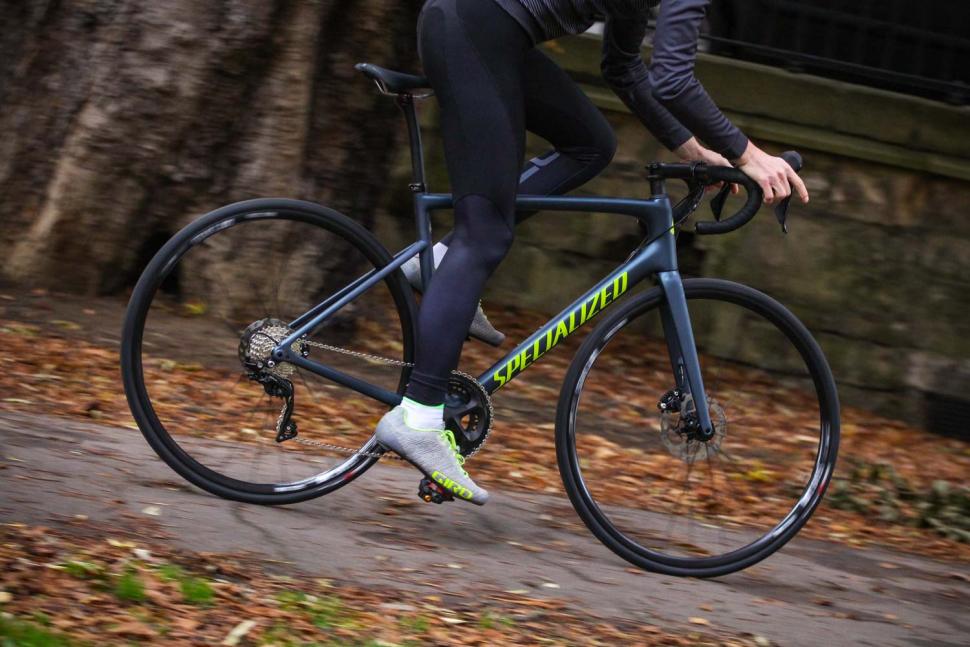





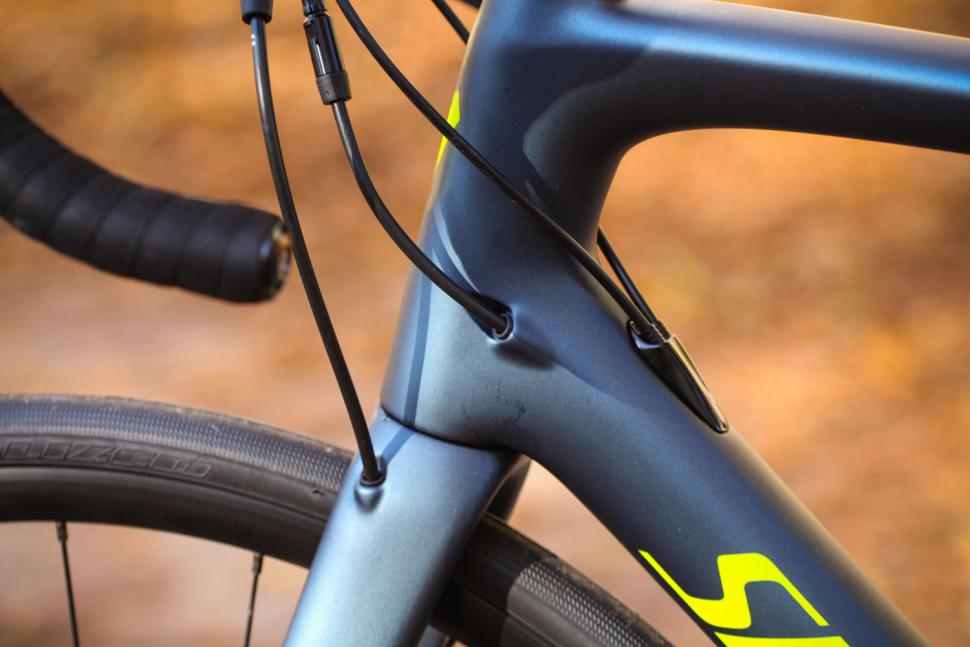



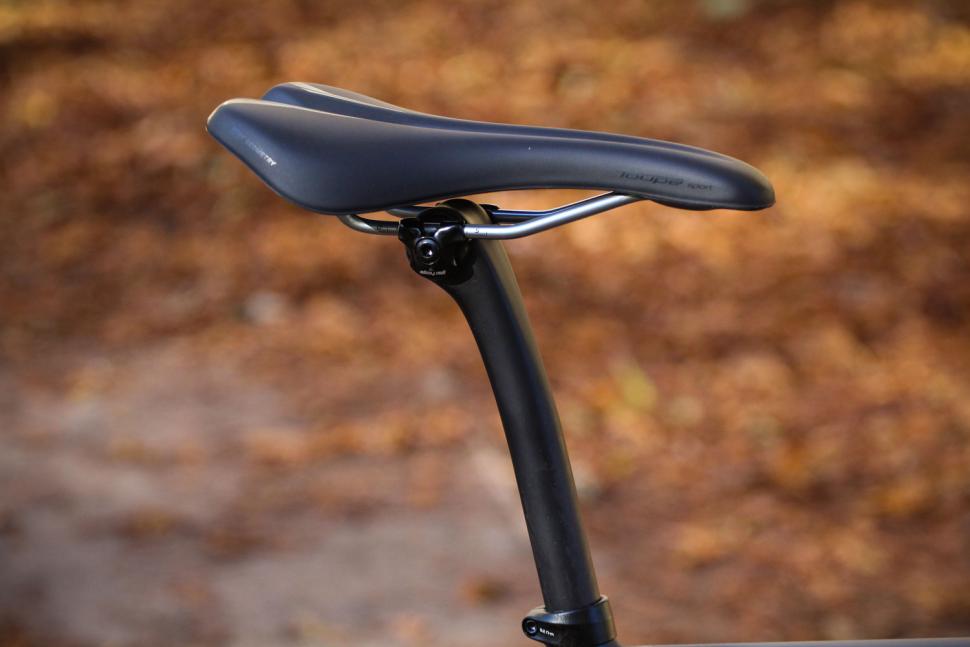
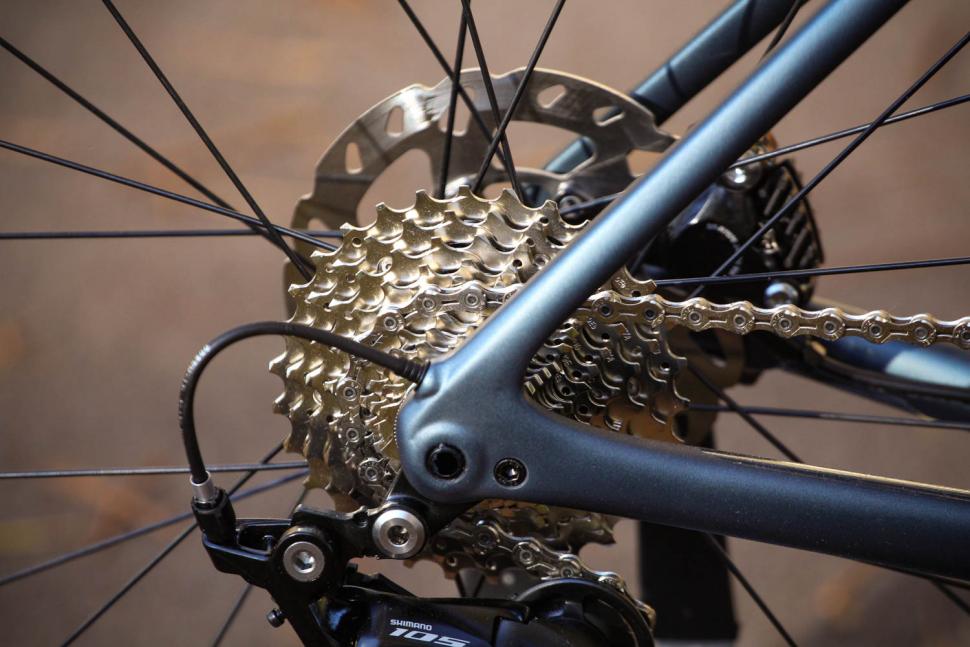
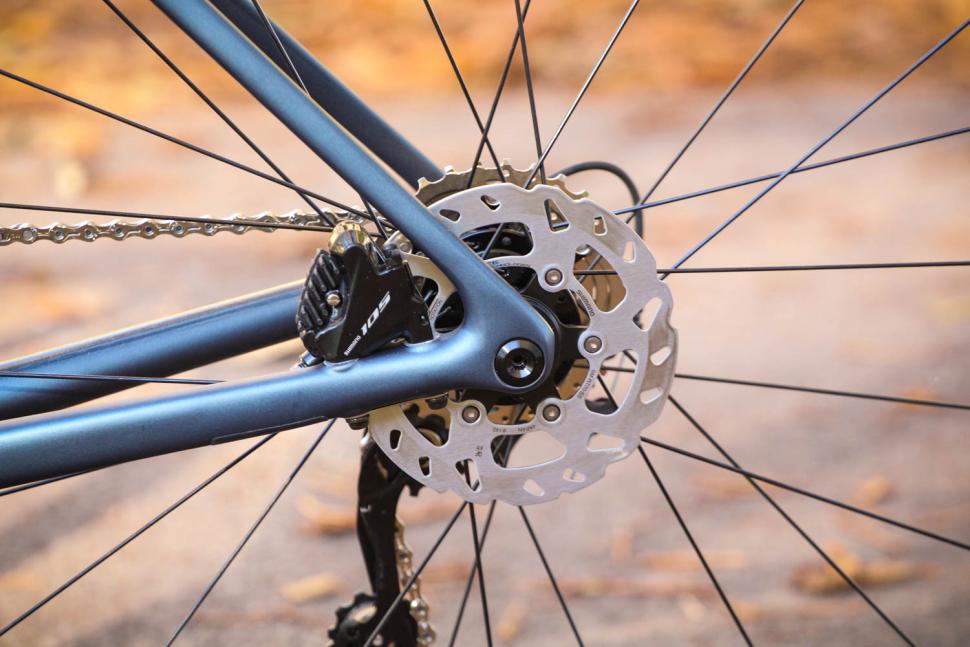




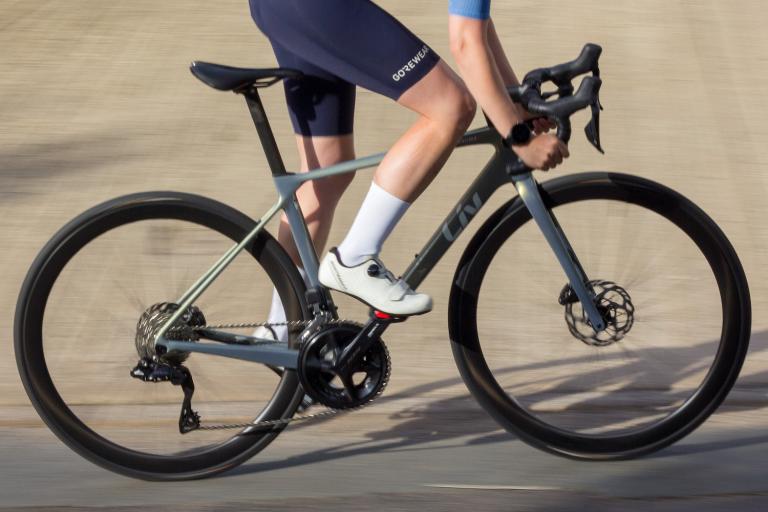
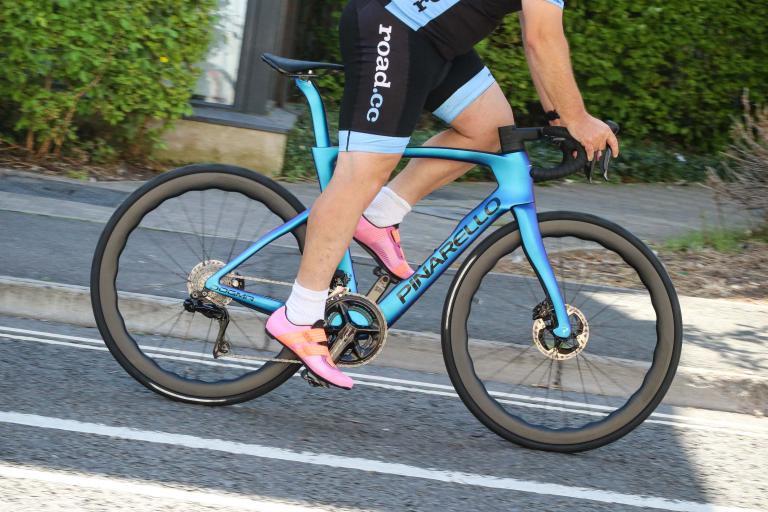
Add new comment
1 comments
I've got these "dependable" DT Swiss wheels on my roubaix. From new in August the grief the rear has given me. Lost count of the broken spokes. i became afraid to ride it! Specialized eventually had to rebuild wheel with new spokes and hub, (perhaps bearings). Touch wood it has run ok for a month. Anyone else had similar experience and what was causing the trouble? Specialized shop didn't or wouldn't explain. Thanks.